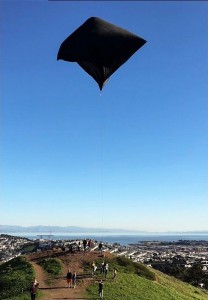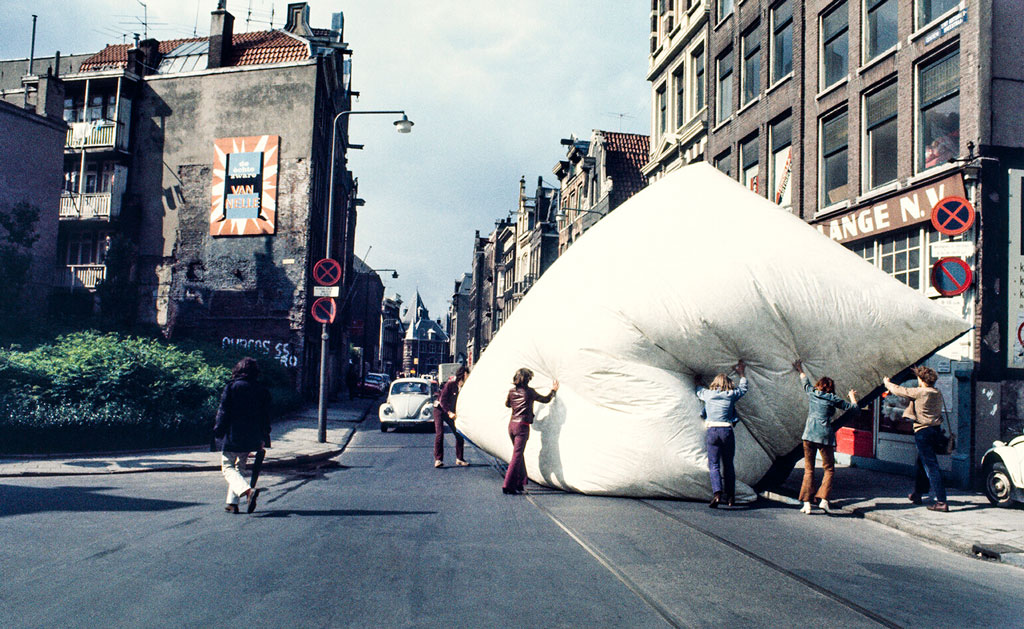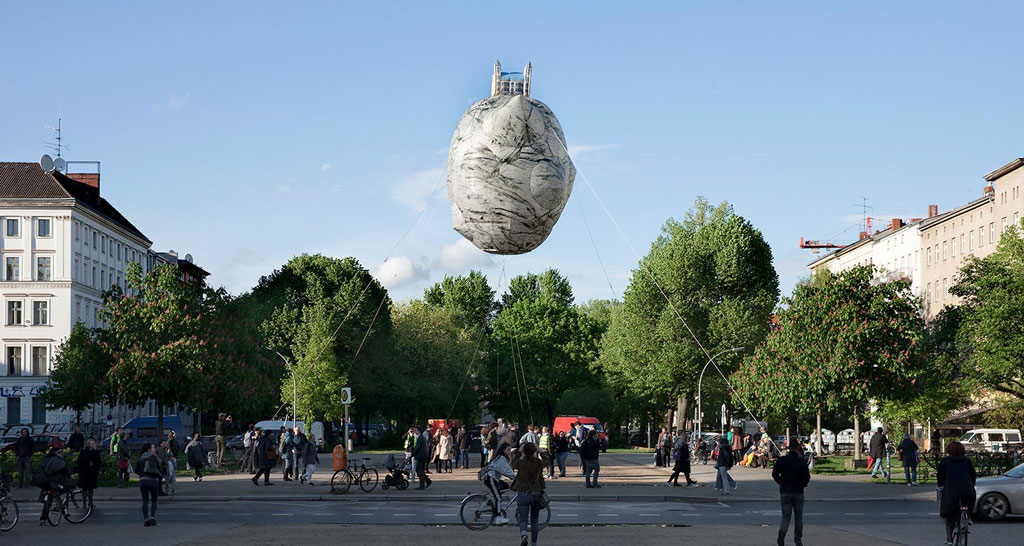ART-PRESENTATION: Floating Utopias
 “Floating Utopias” is a playful and poetic exhibition that explores the social history of inflatable objects, showing how, over the decades, they have been used in art, architecture and activism. Ever since the first hot-air balloon ascended into the skies in the 18th century, inflatable objects have inspired the public’s imagination, generating utopian dreams of castles in the sky, floating laboratories and cloud cities.
“Floating Utopias” is a playful and poetic exhibition that explores the social history of inflatable objects, showing how, over the decades, they have been used in art, architecture and activism. Ever since the first hot-air balloon ascended into the skies in the 18th century, inflatable objects have inspired the public’s imagination, generating utopian dreams of castles in the sky, floating laboratories and cloud cities.
By Dimitris Lempesis
Photo: Lunds konsthall Archive

“Floating Utopias” reveals the impact inflatables continue to have on our collective imagination. The exhibition presents various inflatable media at Lunds konsthall, accompanied by an intervention in urban space. The exhibition juxtaposes historical and contemporary works and shows how inflatables may be used in artistic and activist practices: formless bundles of material are instantly transformed into voluminous spatial presence. The exhibition navigates the broad cultural history of inflatables in art, activism and architecture, their impact on our collective imagination. The first manned balloon flight in the late eighteenth century shifted the general understanding of the possible, suggested new worlds and encouraged visionary utopianism. The history of inflatables is closely intertwined with industrial development. In the 1930s, the car tire industry found a new market in giant inflatable rubber puppets. Soon these figures hovered above socialist and capitalist parades, used for propaganda and advertisement in cities across the Soviet Union and the United States. In the late 1960s, a time of global political turmoil and the promise of space travel, plastic became widely available as an affordable material and was used in pneumatic experiments. Artists, activists and architects tested new forms of performance, protest and alternative living. Recent artistic practices show how inflatables can be used as tools in activism, as an artistic material to challenge monumental spaces and political symbols, and as vehicles for rethinking our dependency on fossil fuels. Dawn Ng presents “Walter” (2010), Ng’s sculpture of a large, curious rabbit was designed to be seen outdoors in the cityscape of Singapore. Ng works with collage, photography, illustration and sculpture. Having lived a nomadic lifestyle, much of her work is rooted in location, playing with notions of home, identity and nostalgia. Like many artists who work in inflatable media, her artwork acts as a tool to disrupt everyday lived experience, inviting us to reconsider the character and charm of the places in which we live. Tomás Saraceno’s “Aerocene” project was conceived to raise awareness about the state of the Earth’s atmosphere and the need to evolve beyond the use of fossil fuels for air travel. The project consists of lighter-than-air sculptures powered by the heat of the sun, the work calls for the deconstruction of aerial borders and the preservation of our air. “Aerocene Explorer” is a backpack containing one of these sculptures — a solar balloon — and a range of technological devices. The backpack and accompanying kit enables anyone to launch their own solar-powered balloon and is designed to be activated by local communities who can use the floating sculpture to collect atmospheric and meteorological data, as well as to document global air currents. Harking back to the pioneering balloons of the 19th Century, “Aerocene” reminds us that the utopian vision of emission-free air travel is already possible, albeit at a small scale. During the exhibition’s opening weekend, the helium balloon “Castle of Vooruit” (2012) by Ahmet Öğüt will float over Lund. The work explores a complex set of utopian ideas in one single surreal image and takes inspiration from the socialist history of the Belgian city of Ghent, where the installation was first displayed in 2012. On top of the floating structure is Vooruit, a cooperative centre in Ghent where the city’s working class assembled from the end of the 19th century until the 1970s. The artwork also references a famous painting by the Surrealist artist, Renè Magritte called The Castle of the Pyrenees. The painting depicts an immense floating rock with a small castle on top of it. Ögüt’s floating sculpture replaces the opulent private castle with a social centre, a clear political comment
Participating Artists: Ant Farm, Anetta Mona Chisa & Lucia Tkácová, Elise Eeraerts, Eventstructure Research Group, Anna Hoetjes, Franco Mazzucchelli, Dawn Ng, Ahmet Öğüt, Tomás Saraceno, Graham Stevens, SUPERFLEX, Tools for Action, UFO, Artúr van Balen and The Yes Men.
Info: Curators: Artúr van Balen, Fabiola Bierhoff and Anna Hoetjes, Lunds konsthall, Mårtenstorget 3, Lund, Duration: 5/9-15/11/20, Days & Hours: Tue-Wed, Fri & Sun 12:00-17:00, Thu 12:00-20:00, Sat 10:00-17:00, https://lundskonsthall.se



